How to Make Pesto like an Italian Grandmother
A vibrant pesto recipe taught to me by my friend Francesca's mother who came to visit from Genoa, Italy. Made with hand-chopped basil, garlic, Parmesan, olive oil and pine nuts. The real deal.

If you've ever tasted pesto in Italy you know that the pesto here in the United States just isn't the same. I received a lesson in how to make pesto from a real Italian grandmother last week and now I understand the difference and what makes this pesto recipe so special.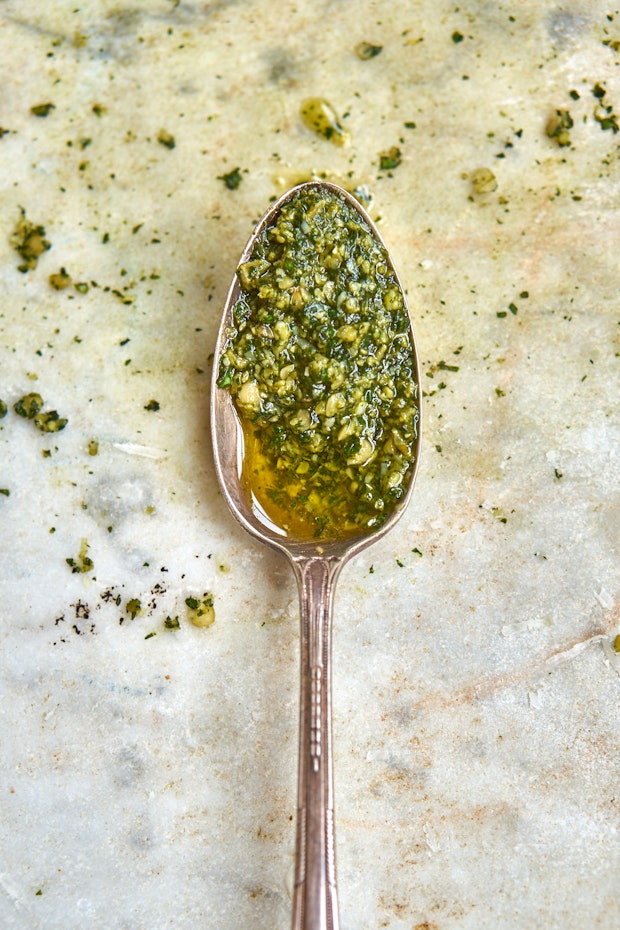
A Special Pesto
My friend Francesca makes the trip from her small town near the pesto-epicenter of Genoa, Italy to San Francisco once or twice a year - this time (lucky for us) she brought her mom and two-year old son Mattia. Her mom makes a beautiful pesto (and perfectly light, potato gnocchi to go along with it) and offered to show me and my friend Jen how it is done. I have to say, it was a complete game-changer. If you love pesto, you really have to try this. Her technique results in an incredibly special version.
Pesto Technique
Most of the pesto you encounter here in the U.S. is different for a few reasons. First off, most of what you see is made by machine, usually a food processor or hand blender. The cook will pulse into a paste. This holds true even if it is homemade. Don't get me wrong, it usually tastes good, but because the ingredients aren't hand chopped you end up with a texture that is more like like a moist, uniform paste with little to no definition between ingredients. You also might see pesto made with a mortar and pestle. This pesto is something different.
During my lesson I quickly began to realize chopping all the ingredients by hand is key because this prevents the ingredients from becoming a completely homogenized emulsion or paste. When you dress a pasta with a pesto that has been hand chopped the minuscule flecks of basil will separate from the olive oil, pine nuts, and Parmesan cheese in places. You get definition between ingredients, and bright flavors pop in a way they don't when they've been blended into one.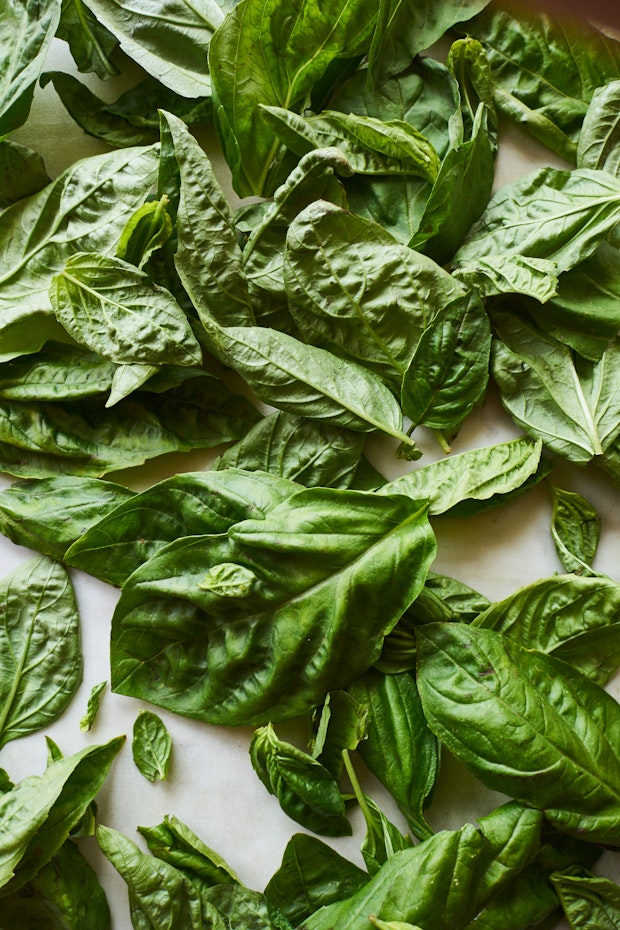
Video: How to Make Pesto
Choosing The Best Basil for Making Pesto
Genovese pesto is famous in part because it is often made with young, small fresh basil leaves. For us non-Italians it is easy to find Genovese basil in stores and at farmer's markets, particularly in the summer. That said, chances are it wasn't picked young. I wouldn't worry about it too much, simply by hand chopping all your ingredients, you will see a major shift in personality of your pesto.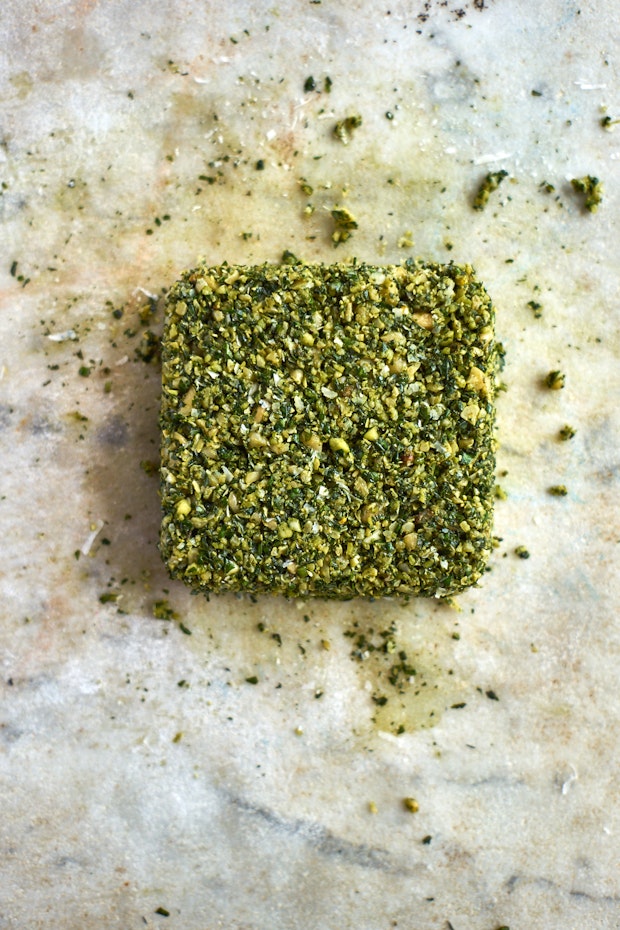
Chop by Hand or Blender?
Per the above, this pesto celebrates hand-chopping. Correspondingly, if you're serious about making good pesto using the hand-chop technique you'll need a sharp (preferably large, single blade) mezzaluna, or a good knife. The sharpness of your blade absolutely matters because you don't want to bruise or tear your basil. Whatever you use to chop, make sure it has a sharp blade or the basil will turn dark. Chopping the ingredients will take twenty minutes or so. Once you chop your ingredients, you'll form them into a cake, pictured above. You add olive oil to this cake, and it's magic.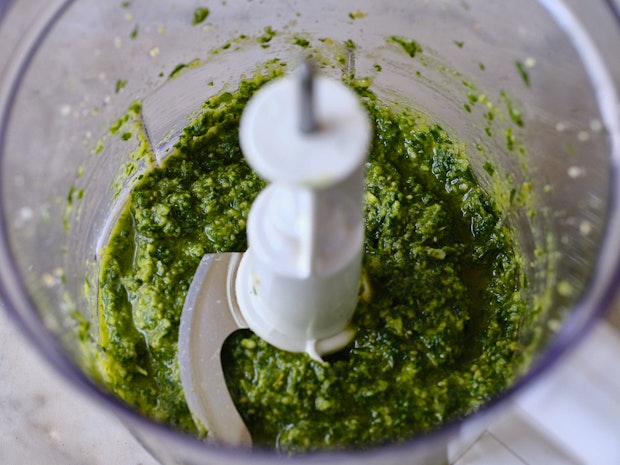
How to Make Pesto with a Blender or Food Processor
We don't always have time to hand chop, I get it! If you want to make pesto using a blender or food processor here's how. Pulse the garlic and pine nuts into a chunky paste. Use the quantities in the recipe below. Add the basil and pulse into a bright green paste. Pulse in the olive oil, adding more if you want a thinner texture. Stir in the grated cheese by hand and season with a bit of salt if needed. Some days, are going to be blender pesto days!
How to Store Basil
There are a number of great ways to keep basil fresh until you’re ready to use it. If you think you’ll use it within a day or two, keep the basil in a jar of water on your countertop. The way you’d keep a bouquet of flowers. If you think it will be a few days beyond that, treat the basil like you would salad greens. Give the basil a gentle wash, then wrap the leaves in a clean kitchen towel or paper towels, place this in a baggie, and refrigerate until ready to use.
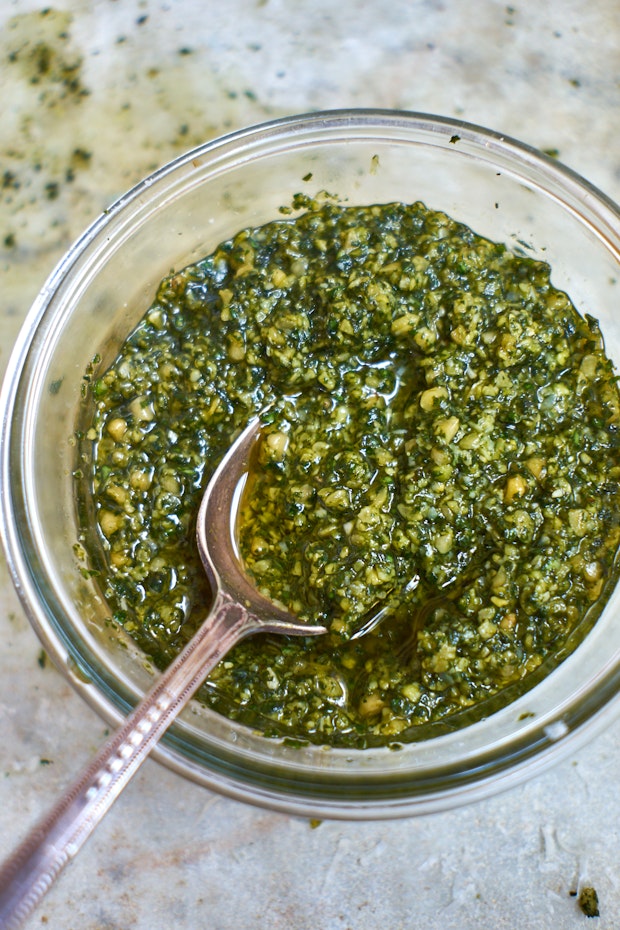
Favorite Ways to Use Pesto
What do you eat pesto with? There are so many great ways to use pesto - some traditional, many not. I love a thick slather as the base sauce on a good pizza (this page actually has an extended list of pizza topping ideas). Or, on a tart before adding other toppings. If you have a slab of sourdough coming off the grill, a bit of pesto, some seasonal roasted veggies, and a dusting of cheese makes an easy meal. And because it lends a bolt of flavor, I love to whisk a dollop into scrambled eggs, or an omelette, mashed potatoes, or on baked potatoes.
How to Store Pesto
Generally speaking, store any pesto you might use in the next day or two, refrigerated, under a thin film of olive oil. You can also freeze it in snack-sized baggies. Thaw and toss with whatever gnocchi, ravioli, or other favorite pasta you like - and a good splash of pasta water!
- How Do I Keep Pesto from Turning Brown? There are a couple ways to keep your pesto bright green. Browning comes from oxidizing. One way to prevent this is to limit exposure to air. Because of this, I like to keep pesto in my narrowest jar with a thin layer of olive oil on top so that no pesto is exposed to air. The other option is to blanch your basil leaves briefly, and proceed with your pesto-making from there. I almost always opt for option one.
- Can Pesto Be Frozen? Yes! You can absolutely freeze pesto. Any pesto you won’t use within a couple days, transfer to freezer baggies. Freeze flat, and break off chunks of pesto to use whenever you need it. When you need larger quantities defrost the entire bag either in the refrigerator or on your countertop.
Pesto Variations
Don't limit yourself to basil pesto. You can absolutely experiment with a blend of other herbs as well. You can add anything from parsley to marjoram (a favorite!), mint to fresh oregano to your basil base. Or leave the basil out entirely! I like to add citrus zest on occasion, or switch up the type of nuts I use - toasted almonds and walnuts are favorites.
Let me know if you try this and what you think!
More Pasta Recipes
- Homemade Pasta
- Pappardelle
- Cavatelli
- Pici
- Beet Fettuccine
- Mushroom Lasagna
- Pasta with Crushed Creamy Walnut Sauce
- Stuffed Shells
- Last Minute Red Lasagna
- more pasta recipes
Favorite Pasta Sauces
Other Favorite Italian Recipes
How to Make Pesto like an Italian Grandmother
One key to perfect pesto is chopping all the ingredients by hand, preferably with a sharp mezzaluna or knife. This pesto will keep a bit in the refrigerator, but it really hits its peak when served soon after it is made. The technique here is: chop a bit, add some ingredients, chop some more. I think part of the reason she does it this way, instead of chopping everything all at once, is because some things get chopped into oblivion. Other ingredients, not as much. It encourages a spectrum of cut sizes throughout the pesto contributing to the overall texture. All told, the chopping took me a leisurely twenty to thirty minutes, I wasn't in any particular rush. You'll also notice this recipe doesn't have any added salt (just the saltiness from the cheese), make sure your pasta water is well salted if you are going to use this pesto on pasta. If you skip it the overall flavor profile will fall flat. Also, be sure to adjust for seasoning before serving. With food this simple, you need to get the seasoning right. Trust your tastebuds.
- 1 large bunch of basil, leaves only, washed and dried
- 3 medium cloves of garlic
- one small handful of raw pine nuts
- roughly 3/4 cup Parmesan, loosely packed and freshly grated
- A few tablespoons of extra-virgin olive oil
-
Start chopping the garlic along with about 1/3 of the basil leaves. Once this is loosely chopped add more basil, chop some more, add the rest of the basil, chop some more. I scrape and chop, gather and chop. At this point the basil and garlic should be a very fine mince. Add about half the pine nuts, chop. Add the rest of the pine nuts, chop. Add half of the Parmesan, chop. Add the rest of the Parmesan, and chop. In the end you want a chop so fine that you can press all the ingredients into a basil "cake" - see the photo up above. Transfer the pesto "cake" to a small bowl (not much bigger than the cake).
-
Cover the pesto "cake" with a bit of olive oil. It doesn't take much, just a few tablespoons. At this point, you can set the pesto aside, or place it in the refrigerator until you are ready to use it. Just before serving, give the pesto a quick stir to incorporate some of the oil into the basil. Francesca's mom occasionally thins the pesto with a splash of pasta water for more coverage, but for our gnocchi this wasn't necessary.


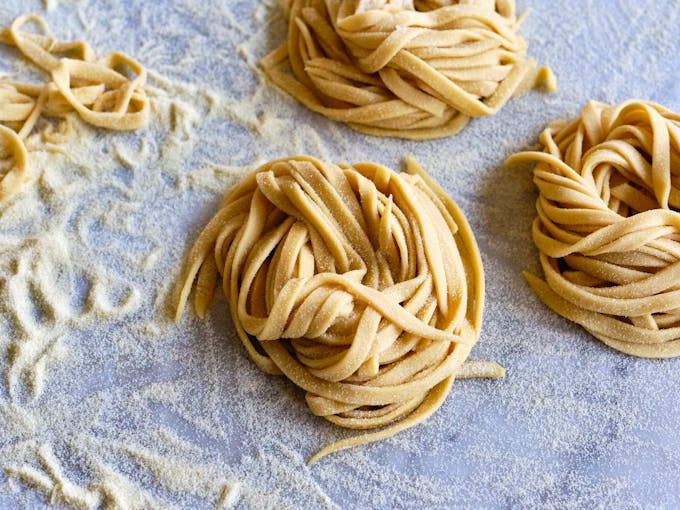
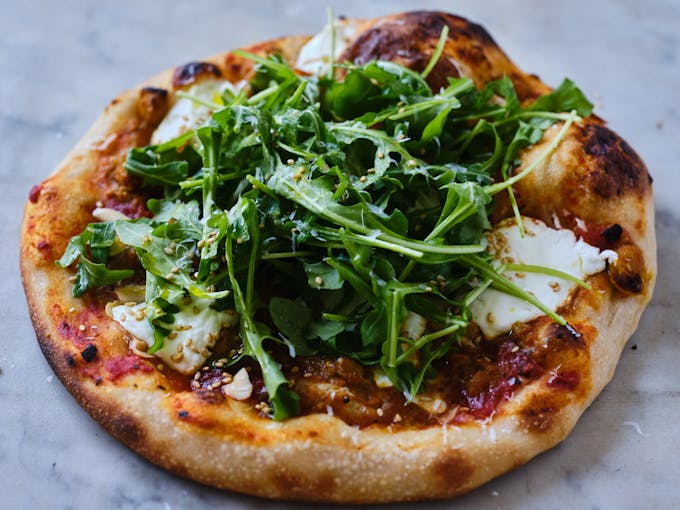

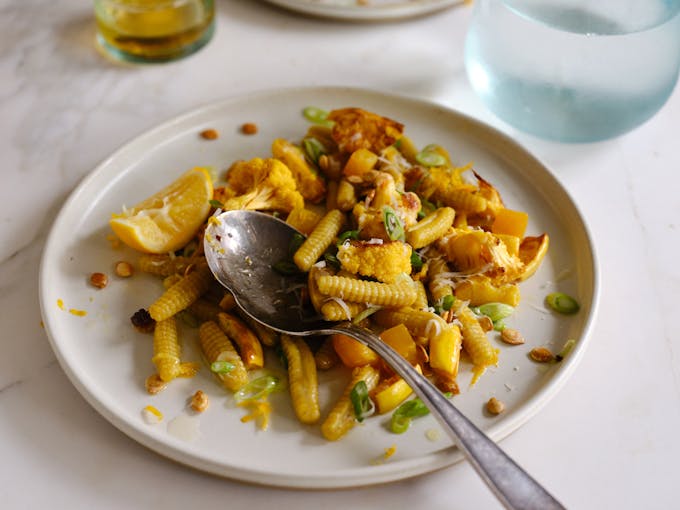
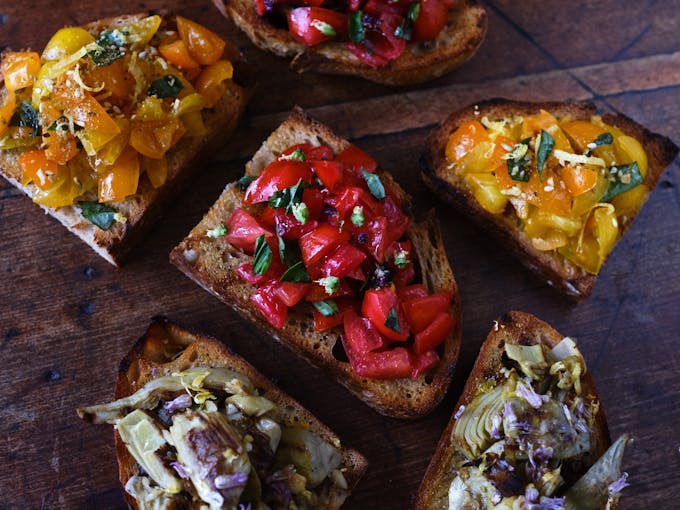

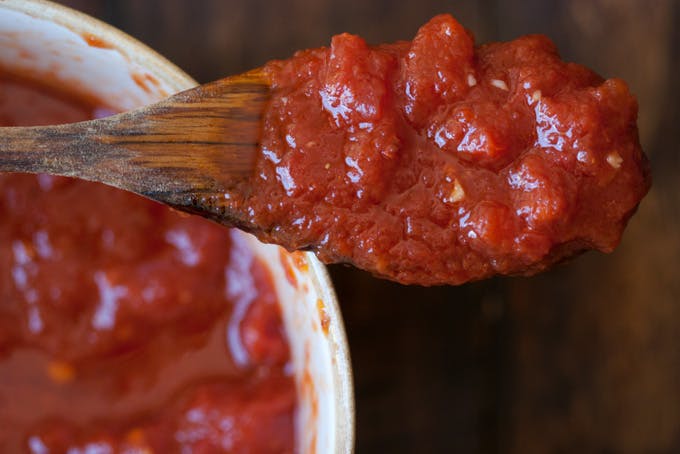
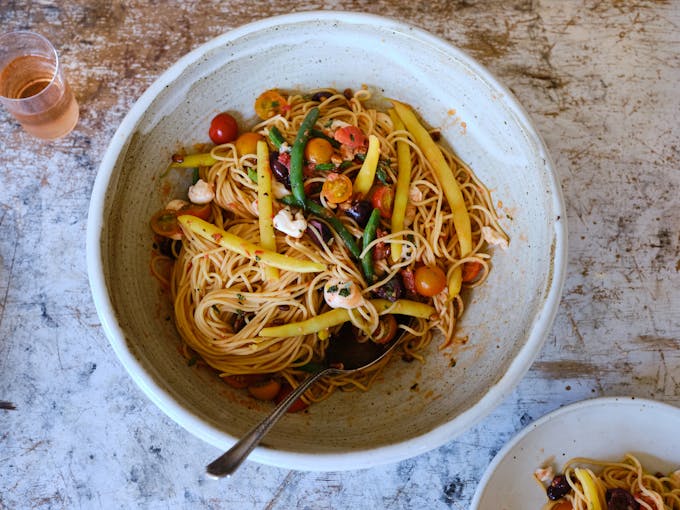
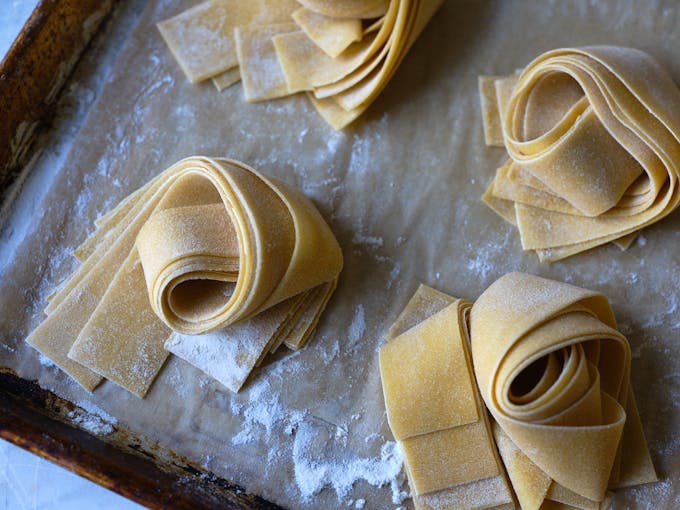

Post Your Comment
Comments
You can substitute nuts like pecans or almonds, they must be toasted, it wil taste different but good. You can substitute cilantro for basil as well - great on burritos! No way! Stick to the real ingredients folks ;-)
Sorry for the delay in responding (this week has been unusually busy!) - regardless, it looks like you all came up with plenty of great suggestions on your own. I love reading them. Robin, I'm not exactly sure what the inspiration was behind the naming of Mattia, but HC's insight is interesting. I will ask her, I suspect there is a story there, but it might be a personal one. As far as the chop vs. smash debate goes: I've done pesto with the mortar and pestle before as well (also wonderful), but really love everything about this particular method and the flavor and texture it yields...
i would venture to say that the difference between home-grown and store-bought basil is more telling than technical differences in how you process it into pesto sauce. herbs are so easy to grow, and the quality difference is just too great to even remember it properly when you have accustomed yourself to grocery store substitutes.
Heidi, as always another fabulous entry. I can't wait for you to share the potato gnocchi recipe. I am a sucker for gnocchi; I see it on a menu I order it!
Heidi, I knew that you should chop by hand for better results, but I never heard that you should chop, add, chop, add and so on... I will definitly try this next time I make pesto! Thanks for all those details! Ps: The more I hear about your book, the more I itch to order it. Lucky amazon 's here!
@Heidi and especially @Fabien - a VERY IMPORTANT POINT from my Italian wife: Genovese basil (Ocimum Basilicum 'Genovese' I believe, aka 'Lemon Basil'), like the basil grown throughout Provence, just down the coast in France, does *not* have very large leaves! The fully mature leaves are small and flat compared to the curled variety commonly found in the US and elsewhere. They are also a lighter shade of green and have a delicate flavor all their own. There are 150 types of basil (!) growing around the world (try making pesto with Thai basil for a wild variation), but for the true Genovese experience, making your pesto with this variety will take it to the next level.
I've also heard that pumpkin seeds can be substituted for pine nuts, but I haven't tried this yet myself. I have successfully used pumpkin seeds in place of almonds in a red mole sauce. (My fiancée is allergic to tree nuts, peanuts, some forms of soy, and, sadly, mushrooms.)
My suggestion would be to substitute the pine nuts for pistachios. You'll be surprised how much you won't miss the pine nuts. Of course, taste is a personal thing, but at least give it a try.
Ms. Swanson, I've used sharp kitchen scissors to good effect on herbs to avoid the darkening / brusing. If one is lacking a mezzaluna or half-moon pizza cutter, they might serve as well. Just a thought... -Jonathan
I've always toasted the pine nuts before chopping, to bring out more flavor. Is that not the case here?
Oh my! I just "food processed" my way to sun dried tomato pesto last night. When I told my mom about your post, her reply (since 1/2 my family is from Genoa) was - "Yes, how else should it be made?" Thanks mom....Missed that in my home-culinary lessons...ha! ha! ha! Thanks for this. I can't wait to try it.
I'm pretty attached to my (American I guess!) pesto recipe but some time will have to try this traditional way, I do love pesto!
Thanks for that. In Katrineholm, Sweden we have pretty good pesto.
My husband bought your beautiful cookbook for me at Prairie Lights Bookstore, Iowa City, IA. I love it. Thanks for writing/photographing it.
In Frankfurt we have a herb based sauce called „Grie Soß” (green sauce) which is very different to pesto, but its secret is the same: chopping it instead of blending because otherwise the sauce turns bitter and the very different tastes of the (seven) herbs mix too much. Although I have always made pesto in the mortar I’ll try this, hoping for a more rough but singular taste of every ingredient. And to add one ingredient after the other just makes it easier to chop, I suppose. Thank you very much. (But: I wouldn’t wash the basil. And I’d add some salt and more oil, if you want the pesto last. Sorry for Denglish)
This recipe sounds fantastic, and being Italian, myself, I can tell it is made the old-fashioned way.
I can't wait to try making pesto this way. It doesn't sound overly difficult, and I can tell from the recipe that my dear Italian grandmother, would have used a recipe like this, in her life time. Thank you.
Guilty as charged -- I rely on my Cuisinart to make pesto, but after this post I will reconsider next time. Last year I did grow my own basil in window boxes off my railing, and while they did have a superior flavor to the bland store-bought creatures, they still didn't compare to basil in Italy proper. I don't know if it's the soil, the sun, the water, or just being in Italy that makes the difference. I love, though, that in Italy you buy basil as a living plant in the produce section. The flavor begins draining from the leaves the second the plant is cut. I wish we had that in our grocery stores.
Beautiful! Yum!
Heidi, Regarding your plans to make a variation on the lasagne with pesto, my father-in-law (who lives near Florence) makes my favorite dish in the world which is simply alternating layers of bechamel sauce and pesto with lasagne. Put a generous dusting of parmesan/romano on each layer. Make sure you use a lot of the bechamel as it can turn out dry if you don't. When I was in Genova, as the commenter Andrea said, the pasta al pesto was prepared with boiled potatoes, which added an interesting texture and buttery flavor to the mix.